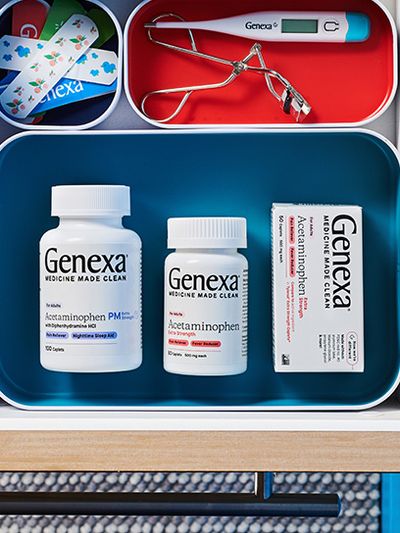Children’s Tummy Aches
Causes, Home Remedies, and Safe Treatment
It’s a phrase every parent hears at some point: “Mom/Dad, my tummy hurts!” Tummy aches in children are extremely common and usually not serious—but they can still cause a lot of discomfort and concern. Whether it’s stomach pain from constipation, gas, indigestion, or a stomach virus, knowing how to ease your child’s symptoms is important. Understanding the common causes of stomach aches in kids, recognizing when it’s time to call the doctor, and using safe home remedies or children’s pain and fever medicine can help get your little one feeling better fast.
Common Causes of Stomach Aches in Children
There are many reasons a child’s belly might hurt. Here are some of the usual suspects when it comes to childhood tummy aches:
- Indigestion or Overeating: Kids’ digestive systems can get overwhelmed if they eat too much or too fast (hello, birthday party cake and ice cream!). This can lead to pain or a “full” uncomfortable feeling. Greasy or spicy foods might also cause mild indigestion in some children.
- Gas Pain: Gas buildup in the intestines can cause crampy pains that come and go. This might happen from swallowing air (like when drinking fizzy soda or chewing gum), or from certain foods that produce gas (beans, certain veggies, etc.). Babies can get gas pains too if they swallow air while feeding.
- Constipation: If your child hasn’t been going number two regularly, stool buildup can lead to abdominal pain. They might describe it as a stomach ache, or you might notice they’re straining or their poops are hard and infrequent. Constipation is very common, especially during toilet training years or with changes in diet.
- Stomach Bug (Viral Gastroenteritis): A stomach virus (the infamous “stomach flu”) can cause sudden tummy cramping, vomiting, and diarrhea. These infections are usually viral and go away on their own in a day or two, but they can be rough while they last.
- Food Poisoning: Similar to a stomach bug, but caused by bacteria or toxins in something your child ate. Symptoms (vomiting, diarrhea, pain) can come on within hours of eating the offending food. This usually resolves within 24 hours, but hydration is important.
- Food Intolerance or Sensitivity: Sometimes certain foods just don’t agree with a child’s digestive system. For example, lactose intolerance (trouble digesting the sugar in milk) can cause gas, bloating, and diarrhea after eating dairy. Unlike a food allergy, an intolerance doesn’t involve the immune system, but it can still cause stomach aches. Keep an eye out for patterns – if ice cream always leads to a tummy ache, lactose intolerance could be why.
- Stress or Anxiety: Believe it or not, kids can get “butterflies” or stomach aches due to stress, just like adults. Big changes (a new school, exams, family conflicts) or anxiety (like social anxiety or worry about an upcoming event) can manifest as real tummy pain or nausea. Kids might not always connect the dots, so consider if there’s something stressing your child when they complain of a mysterious recurring stomach ache.
- Motion Sickness: Car rides or spinning on the playground merry-go-round might trigger a nausea and stomach upset in some children who are sensitive to motion sickness. They’ll usually say they feel “yucky” or like they might throw up, often during or right after the motion activity.
- Mild Acid Reflux: Kids can get heartburn too. If stomach acid flows back up into the esophagus, it can cause a burning pain or tummy hurt. This might happen if a child lies down too soon after eating or has certain acidic foods. It’s more common in older children and teens, but even younger kids can occasionally have reflux symptoms.
- Other Infections: A sore throat or ear infection can sometimes come with “referred” tummy pain or just make a child feel unwell overall, including their stomach. Urinary tract infections (especially in younger kids) can also cause belly pain. And appendicitis, while less common, is a serious cause of abdominal pain that usually starts around the belly button then moves to the lower right side with severe intensity – that one requires immediate medical care. (Don’t worry, we’ll cover warning signs in a moment.)
As you can see, the list is long! The good news is most simple tummy aches improve on their own with a little time and TLC. The key is to observe what other symptoms are present and how your child is acting.
Tummy Ache Relief Made Clean
Make the switch to Genexa's clean tummy ache relief for kids—made with an effective calcium carbonate antacid and 0% artificial additives. This dye-free chewable medicine helps ease your child's stomach discomfort and is made with a delicious berry flavor.
Home Remedies for Mild Tummy Troubles
When your child has a minor stomach ache without any serious symptoms, you can try some gentle, at-home remedies to help them feel better:
- Rest and Reassurance: Sometimes the best medicine is just taking it easy. Encourage your child to lie down and relax. Distraction with a story or a cuddling session can help take their mind off the pain. Simply resting the stomach (avoiding heavy food for a bit) can ease indigestion. Often, kids feel better after a brief nap or just some quiet time on the couch.
- Hydration – Small Sips: If your child has been vomiting or has diarrhea (like with a stomach bug), keeping them hydrated is crucial. Give small sips of water or a clear fluid frequently. For older kids, sports drinks or an electrolyte solution (like Pedialyte) can help replace salts and sugars lost – make sure it’s sipped slowly to avoid triggering more vomiting. For a child just with a mild stomach ache, water or a bit of warm decaf tea (like chamomile) can be soothing. Avoid soda or sugary drinks, as they can sometimes make diarrhea worse (and the bubbles in soda can increase gas).
- Bland Diet (BRAT): If your child is a bit queasy or recovering from vomiting, stick to bland foods for a while. The classic BRAT diet – Bananas, Rice, Applesauce, Toast – is easy on the stomach. You don’t have to strictly use only those foods, but the idea is to offer bland, low-fat, non-spicy items: crackers, oatmeal, boiled potatoes, plain pasta, etc. Once they’re keeping that down, you can slowly return to normal diet. If there’s no vomiting, they can eat lightly as tolerated. Trust their appetite; they’ll usually tell you what they feel up to eating.
- Warm Compress or Warm Bath: A warm (not hot) compress on the tummy can ease cramping or the pain of gas. You can use a warm water bottle wrapped in a towel or a heating pad on low (with supervision). Even sitting with your child in a cozy warm bath can relax their muscles and sometimes help get rid of gas pains. Just make sure they drink some water if it’s a warm bath, to stay hydrated.
- Tummy Massage for Gas: Gently rubbing your child’s belly can help move gas along and relieve pain. Use a circular motion, moving clockwise (the direction of the intestines). Some parents also find that laying the child on their back and bicycling their legs (moving the legs in a cycling motion) helps release trapped gas in infants and toddlers. You might be rewarded with a few toots – a good sign of relief on the way!
- Ginger or Peppermint: Natural tummy soothers like ginger and peppermint can be helpful if your child is feeling nauseous (assuming they’re old enough – generally for school-age kids and up). A cup of mild ginger ale (let it go a bit flat to reduce bubbles) or some ginger tea can settle the stomach. Peppermint candy or tea can also help with nausea or stomach cramps by relaxing the gut muscles. Even sniffing peppermint oil has been shown to reduce nausea in some cases. Of course, use these in moderation and only if your child likes the flavor – no need to force it.
- Probiotics/Yogurt: If your child’s tummy issues stem from a round of antibiotics or a mild stomach bug, probiotics might help restore good gut bacteria. A serving of plain yogurt with live cultures or a child-specific probiotic supplement (check with your pediatrician) could aid digestion. This is more of a longer-term support rather than immediate pain relief, but it’s worth considering for kids who get frequent tummy troubles.
- Keep a Sick Bucket Handy: Not exactly a remedy, but if your child is saying they feel like they might throw up, having a bucket or trash can nearby (or in the car during drives) can reduce anxiety. Sometimes the fear of vomiting or making a mess can make a child cry and feel worse. Being prepared with a bowl and a cool washcloth can make the situation less stressful for both child and parent.
In many cases, a child’s stomach ache will improve with these home strategies. Keep a close eye on them, and offer plenty of TLC. Most kids bounce back pretty quickly from routine tummy troubles.
When to See a Doctor
While most tummy aches are harmless, certain signs should prompt a call or visit to the pediatrician:
Severe or Persistent Pain: If your child is having severe pain (e.g., they are doubled over, screaming, or the pain has lasted more than an hour and is not easing up at all), seek medical attention. Especially concerning is pain that started near the belly button and moves to the lower right side – that could indicate appendicitis, which needs urgent care.
Fever and Stomach Pain: A mild fever with a stomach bug is common, but a high fever (above 102°F/39°C) with belly pain, or even a moderate fever in a baby with stomach pain, should be evaluated. This could signal something like appendicitis or another infection.
Repeated Vomiting or Inability to Keep Fluids Down: If your child vomits everything they try to drink, or vomiting persists for more than 24 hours (or more than 12 hours in a very young child), call the doctor. Watch for signs of dehydration like not peeing, crying without tears, or a dry mouth. Young children can get dehydrated quickly.
Bloody Vomit or Diarrhea: If there is blood in the vomit (it may look like “coffee grounds” or red), or blood in the stool/diarrhea (red or black color), seek medical care immediately. This could be a sign of a more serious gastrointestinal issue.
Distended Abdomen or Severe Constipation: If your child’s belly is bloated and hard, and they haven’t had a bowel movement in many days, they might be severely constipated or have an obstruction. The doctor might recommend a safe child laxative or further tests. Chronic constipation should be managed with a pediatrician’s help to avoid complications.
Pain with Urination: Sometimes kids will say their tummy hurts when it’s actually pain coming from the bladder. If it hurts when your child pees, or they have to go very often and only a little comes out, it could be a urinary tract infection causing lower abdominal pain. A simple urine test at the doctor can check for this.
Rash or Joint Pain with Belly Pain: Unusual combinations of symptoms like a purplish rash, joint swelling, or severe headache along with stomach pain could indicate rarer illnesses (like certain inflammatory conditions). These warrant a doctor’s evaluation to rule out anything serious.
Your “Parental Instinct” Says Something’s Off: You know your child best. If they just don’t seem like themselves, or you’re frankly worried that this stomach acheisn’t normal, it’s completely reasonable to call the pediatrician. Doctors would much rather reassure you or check out a child than miss something important.
Always err on the side of caution – a quick call to the nurse line or pediatrician can guide you on whether your child’s symptoms sound worrisome. Trust your gut when it comes to your child’s gut!
Safe Treatment Options (OTC Medicines and More)
If your child’s stomach ache has a specific cause that can be helped with over-the-counter (OTC) medicine, here are some safe treatment options to consider (after any necessary doctor advice):
For Indigestion or Heartburn: If your child occasionally complains of a burning tummy or chest (heartburn), an antacid might help neutralize stomach acid.
Example: Genexa Kids’ Tummy Relief is a chewable calcium carbonate tablet made for children’s upset stomach relief. It works like a kid-friendly TUMS®, easing heartburn and sour tummy feelings, and it’s formulated without artificial dyes or common allergens – a “clean” choice for relief. Always follow dosing instructions on the label (usually based on age/weight). Genexa’s calcium carbonate antacids for kids can be used in children ages 2+. They shouldn’t be used constantly without doctor advice, but for the occasional tummy ache from acid, they can be quite effective.
For Gas Pain: Simethicone drops or chewables (like the infant gas drops you might’ve used when they were babies) can break up gas bubbles and provide relief from bloating and pressure. These are safe for infants and children. They work best for gas-related discomfort (you’ll often hear some burps or toots soon after!).
For Constipation: If home remedies like hydration, fiber-rich foods, and prune juice aren’t providing relief for a constipated child, you might consider a pediatric glycerin suppository for quick, gentle support in younger kids, or a laxative with sennosides, a plant-based stimulant ingredient that helps encourage bowel movements by stimulating the intestines. Important: Always talk to your pediatrician about the appropriate use and dosage of these options based on your child’s age and needs. Never give laxative pills or suppositories without medical guidance, especially in very young children. Often, your doctor will recommend a short-term plan to relieve constipation and a long-term approach (including diet and lifestyle changes) to keep things regular.
For Nausea/Vomiting: There aren’t many OTC anti-nausea medicines for children (and you should avoid adult meds like meclizine or Dramamine in young kids unless a doctor says so). Instead, focus on hydration and perhaps some ginger as mentioned. If your child gets motion sickness, you can ask the doctor about the appropriate dose of an over-the-counter motion sickness med for their age (dimenhydrinate, the ingredient in Dramamine, is used for kids, but dose depends on weight – always double-check with a doctor or pharmacist). There are also acupressure wristbands (Sea-Bands) that some kids use for car sickness to reduce nausea.
For Cramping Pain: A warm compress and rest are often the best first steps, but if your child is very uncomfortable from cramps or a stomach ache, you might consider an appropriate dose of a pain reliever. Genexa Kids’ Pain & Fever can help ease discomfort, especially if the tummy ache is part of a broader illness like a virus, and they’re also experiencing fever or body aches. Since it contains acetaminophen, it’s gentle on the stomach when used as directed. It’s best to avoid giving ibuprofen on an empty stomach, as it can sometimes irritate the stomach lining and potentially make a stomach ache worse. And remember: No aspirin for kids, as it can pose a risk of Reye’s syndrome when used during viral illnesses.
Probiotic Supplements: If your child has frequent digestive issues or recently took antibiotics, a probiotic supplement might help regulate their gut flora. There are many kid-specific probiotics (chewable or powder form). While these aren’t a “quick fix,” they can promote a healthier digestion over time. Always choose a reputable brand and check with your doctor if you’re unsure.
A quick note on Pepto-Bismol® and adult medicines: The pink bismuth liquid many adults use for upset stomach (bismuth subsalicylate) is not recommended for young children. It containsa salicylate (related to aspirin), which isn’t safe for kids, especially if they might have a virus. Remember to always check the age indications.
A Gentle Approach to Tummy Troubles
In summary, most childhood tummy aches are manageable with a bit of patience, home care, and maybe an over-the-counter assist. As a parent, you’ll get to know your child’s “usual” tummy issues – maybe your little one is prone to constipation, or perhaps they get a nervous stomach before big events. By understanding the cause, you can tailor the remedy: prune juice and fiber for the constipated kiddo, or extra hugs and relaxation for the anxious one.
Always keep the tone calm and reassuring when your child has a stomach ache. Kids take cues from us – if you stay cool and confident (“It’s okay, tummy aches happen. Let’s try drinking some water and resting.”), they’ll feel less scared about their pain.
And remember, Genexa and other reliable brands have your back with effective medicines when you need them. Whether it’s a clean-ingredient antacid for your child’s heartburn or simply knowing you have acetaminophen on hand in case of a painful bug, having these tools at the ready can reduce stress when tummy aches strike.
Lastly, if anything feels really off or the pain doesn’t improve, don’t hesitate to seek medical advice. You’re not alone – pediatricians have heard “my kid has a tummy ache” countless times, and they can guide you. With attentive care and a little time, your child’s belly will hopefully be back to normal soon, and you’ll hear the sweet sound of “I feel better!” once again.







